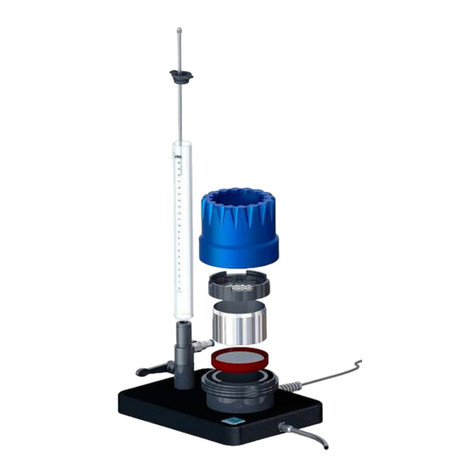Introduction
7/48
1.6 Tensiometer T5 and T5x
1.6.1 Soils and soil water
All water movements in soils are directly depending on the soil water
tension as water - in soils as well as on the surface - always will
move from a point of higher potential to a point of lower potential.
The majority of soil water flows take place at small water tensions.
Only Tensiometers allow the direct and precise measurement of
these small tensions.
Naturally embedded soils are heterogeneous. Not only precipitation
and evaporation effect the processes, but also texture, particle size
distribution, cracks, compaction, roots and cavities. Due to these
heterogeneities the soil water tension varies. Thus, it is reasonable
to have multiple measuring points at least in soil horizons close to
the surface.
1.6.2 Intended use
The intended use of Tensiometers is the measurement of soil water
tension respectively of matrix potential. These Tensiometers work
from +100 kPa (water pressure/level) to -85 kPa (suction/soil water
tension), the T5x even to a lower tension.
If the soil dries out the Tensiometer runs empty and must be refilled
as soon as the soil is sufficiently moist again.
Soil water and Tensiometer water have contact through the ceramic
which is porous and permeable to water. A wetted porous ceramic
creates an ideal pore/water interface. The soil water tension is
directly conducted to the pressure transducer which offers a
continuous signal.
The atmospheric reference pressure is provided through a
membrane on the cable, a distinctive patented method.
The T5 Miniature Tensiometer is specially designed for punctual
measurements, e. g. in soil columns, pots or laboratory lysimeters, or
when the measurement of a minimal span is desired.
With an active surface of only 0,5 cm2and a diameter of 5 mm the
ceramic tip has all advantages of small dimensions: little soil
disturbance, punctual pick-up and fast response.






























